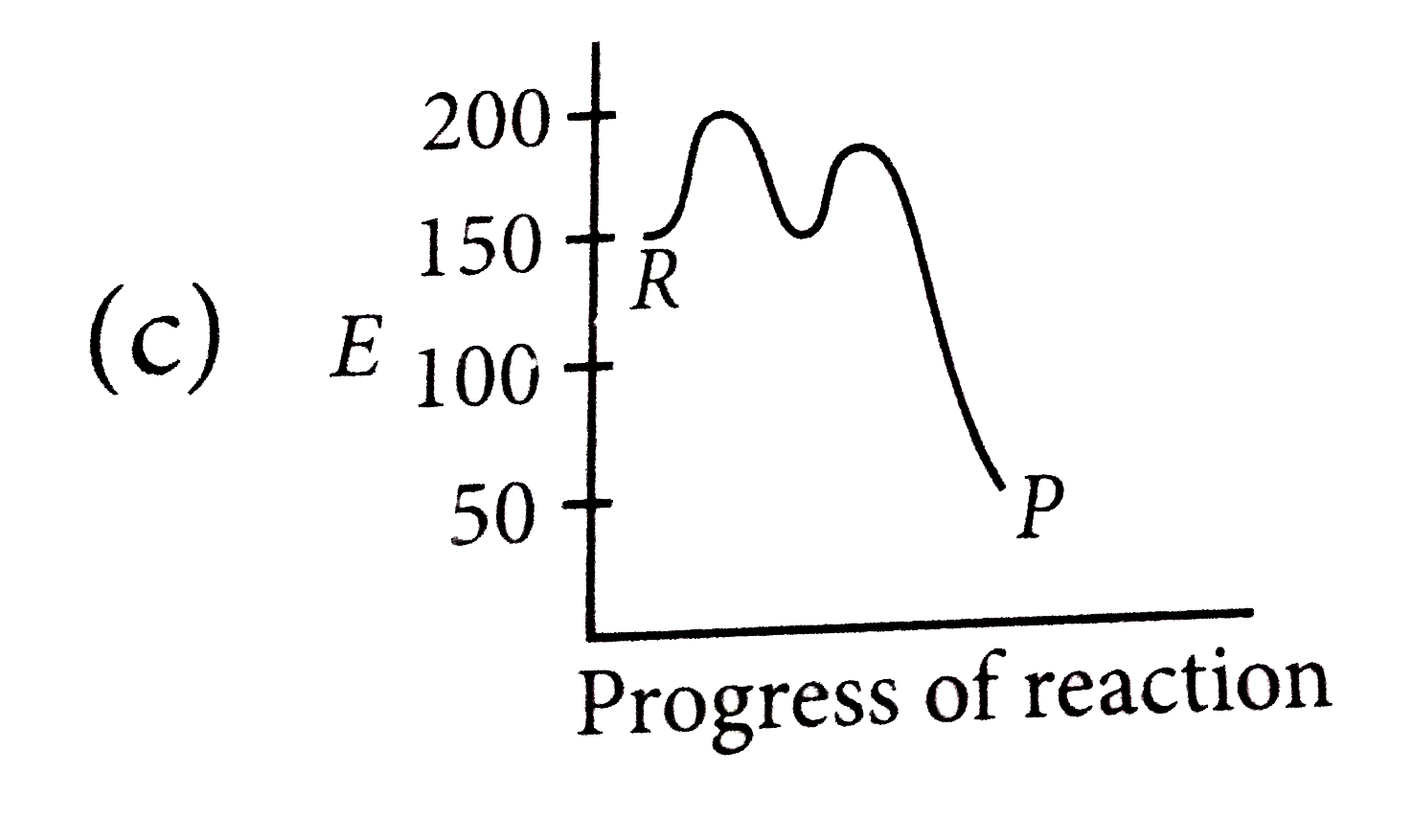For an exothermic chemical process ocuuring in two process occuring in two steps as follows
(i)A+B→X(slow) (ii)X→AB(fast)
The progress of reaction can be best described by :




The correct Answer is:C
To solve the problem regarding the progress of an exothermic chemical process occurring in two steps, we need to analyze the given reactions and their characteristics.
1. Identify the Reactions:
- The first reaction is A+B→X (slow step).
- The second reaction is X→AB (fast step).
2. Determine the Rate-Determining Step:
- Since the first step is the slow step, it is the rate-determining step (RDS). This means that the energy barrier for this step is higher compared to the second step.
3. Understand Exothermic Reactions:
- In an exothermic reaction, the energy of the products is lower than that of the reactants because energy is released during the reaction. Therefore, the products are more stable.
4. Graphical Representation:
- We need to plot a potential energy diagram for the reaction:
- The energy of reactants A+B will be higher than that of the product AB.
- The transition state for the first step (from A+B to X) will have a high energy peak because it is the slow step.
- The transition state for the second step (from X to AB) will have a lower energy peak since it is the fast step.
5. Drawing the Energy Diagram:
- Start with a high energy level for the reactants A+B.
- Draw a peak for the transition state of the first step (high energy).
- After the peak, drop down to a lower energy level for the intermediate X.
- Then, from X, draw a smaller peak for the transition state of the second step (lower energy).
- Finally, drop down to an even lower energy level for the products AB.
6. Conclusion:
- The correct graph will show that the energy of the reactants is higher than the energy of the products, with the first transition state being the highest point on the graph, followed by a lower transition state for the second step.
Final Answer:
The progress of the reaction can be best described by graph C, which shows the energy of reactants higher than that of the products, with the appropriate energy peaks for the transition states.
- The first reaction is A+B→X (slow step).
- The second reaction is X→AB (fast step).
- Since the first step is the slow step, it is the rate-determining step (RDS). This means that the energy barrier for this step is higher compared to the second step.
- In an exothermic reaction, the energy of the products is lower than that of the reactants because energy is released during the reaction. Therefore, the products are more stable.
- We need to plot a potential energy diagram for the reaction:
- The energy of reactants A+B will be higher than that of the product AB.
- The transition state for the first step (from A+B to X) will have a high energy peak because it is the slow step.
- The transition state for the second step (from X to AB) will have a lower energy peak since it is the fast step.
- Start with a high energy level for the reactants A+B.
- Draw a peak for the transition state of the first step (high energy).
- After the peak, drop down to a lower energy level for the intermediate X.
- Then, from X, draw a smaller peak for the transition state of the second step (lower energy).
- Finally, drop down to an even lower energy level for the products AB.
- The correct graph will show that the energy of the reactants is higher than the energy of the products, with the first transition state being the highest point on the graph, followed by a lower transition state for the second step.
The progress of the reaction can be best described by graph C, which shows the energy of reactants higher than that of the products, with the appropriate energy peaks for the transition states.
Similar Questions
Knowledge Check
An exothermic chemical reaction proceeds by two stages reactants Stage I−−−→intermdediateStage II−−−→ products, The activation energy of stage I is 50kJmol−1. The overall enthalpy change of the reaction is −100kJ mol−1. Which diagram could represent the energy level diagram for the reaction ?
A B
B C
C D
D
A reaction is found to proceed in two steps as A+B→E (slow),, A+E→C+D (fast). Write the law expresison and overall balanced equation.
View SolutionFor an exothermic reaction, following two steps are involved.
Step 1. A+B→I (slow)
Step 2. I→AB (fast)
Which of the following graphs correctly represent this reaction ?
View SolutionA chemical reaction proceeds into the following steps
Step I, 2A⇔X fast
Step II, X+B→Y slow
Step III, Y+B⇔ product fast
The rate law for the overall reaction is
View SolutionGiven below is a sketch of a plant for carrying out a process.

(i) Name the process occuring in the above plant.
(ii) To which container does the net flow of solvent takes place?
(iii) Name one SPM which can be used in this plant.
(iv) Give one practical use of the plant.
View SolutionGiven below is a diagram depicting a physiological process in mammals. Study the same and answer the following questions :
(i)Name the process occurring in the diagram.
(ii)Explain the process mentioned in part (i).
View SolutionDescribe the principle involved in each of the following processes :
(i) Zone refining of a metal
(ii) Vapour phase refining of metals
View SolutionIn an infinite geometric progression , the sum of first two terms is 6 and every term is four times the sum of all the terms that follow it . Find (i) the geometric progression and (ii) its sum of infinity .
View Solution

